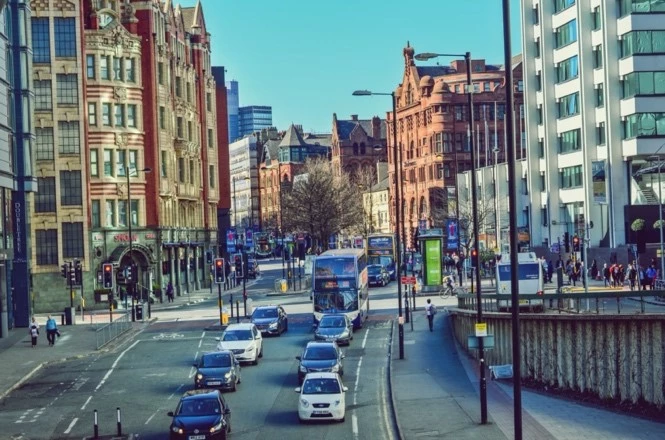
Partner Article
University of Bristol research reveals half as many e-scooters as bikes are used each day in the city
The university has partnered with VivaCity to leverage first-of-its-kind sensor capability to automatically detect e-scooters in relation to other vehicles.
With the next round of Bristol e-scooter rental trials set to finish in November, research from the University of Bristol has revealed that there are now nearly half as many e-scooters per day as cyclists in the Bristol University area.
The data, gathered anonymously and in real-time, was collated using VivaCity’s AI-powered sensors from 30th August onwards. The sensors recorded 523 e-scooters on average per day throughout the period compared to 1,054 cyclists.
When looking at e-scooter usage week-on-week, the daily number of e-scooters recorded rose throughout September to its highest levels in the first week of October, peaking on Friday the 14th at almost 700. This increase aligns with the start of the new University term.
Since the University of Bristol’s induction week from the 19th of September and the start of term, weekly e-scooter levels have remained stable between 3,700 and 4,100.
At the weekend, average counts in October showed levels of e-scooters were almost the same as cyclists, even peaking above cyclist levels in the early afternoon hours before dropping off after 18:00.
The sensors were also able to identify where e-scooters are used in the road space. More than 96% of e-scooters were recorded on the carriageway and 19 e-scooters were detected on the pavements on an average day. The research showed a lower proportion of people using e-scooters are using the pavement compared to cyclists, sitting at 3.6% vs 5.5% respectively.
Dr Nikolai Bode, lead researcher at University of Bristol, said: “Our aim is to understand general trends in uptake of e-scooters in terms of volumes, peak times and where in the road space e-scooters are used. In addition, we are interested in exploring interactions between e-scooters and other road users, in particular pedestrians.
“From these initial findings, for example, we can see that a low proportion of e-scooters are using the pavement and we can make the assessment that this is linked to most e-scooters using the cycle lane along Park Row eastbound leading towards Bristol city centre.”
Mark Nicholson, CEO of VivaCity, added: “Our sensors have the unique ability to automatically detect e-scooters anonymously and assess their pathways and interactions with road users. As councils and transport authorities continue to assess e-scooter use ahead of potential Government legislation in 2024 to include e-scooters as a vehicle category, this anonymous data can provide crucial insight into infrastructure use, trends and facilitation.
“By working with the University of Bristol, we’re excited to provide previously unknown insight into interactions with other road users, road usage and enable data-led decisions about road space design and regulation.”
While Local Councils have access to data from e-scooter providers, this new capability fills a data-gap on all other e-scooter use. It will enable Local Councils to collect much needed evidence on usage patterns to inform future roll-outs of e-scooter vehicles.
The University of Bristol is one of the first to use this new feature in its analysis of road trends.
This was posted in Bdaily's Members' News section by Lucy Jefferson .
Enjoy the read? Get Bdaily delivered.
Sign up to receive our popular morning National email for free.








 A year of growth, collaboration and impact
A year of growth, collaboration and impact
 2000 reasons for North East business positivity
2000 reasons for North East business positivity
 How to make your growth strategy deliver in 2026
How to make your growth strategy deliver in 2026
 Powering a new wave of regional screen indies
Powering a new wave of regional screen indies
 A new year and a new outlook for property scene
A new year and a new outlook for property scene
 Zero per cent - but maximum brand exposure
Zero per cent - but maximum brand exposure
 We don’t talk about money stress enough
We don’t talk about money stress enough
 A year of resilience, growth and collaboration
A year of resilience, growth and collaboration
 Apprenticeships: Lower standards risk safety
Apprenticeships: Lower standards risk safety
 Keeping it reel: Creating video in an authenticity era
Keeping it reel: Creating video in an authenticity era
 Budget: Creating a more vibrant market economy
Budget: Creating a more vibrant market economy
 Celebrating excellence and community support
Celebrating excellence and community support